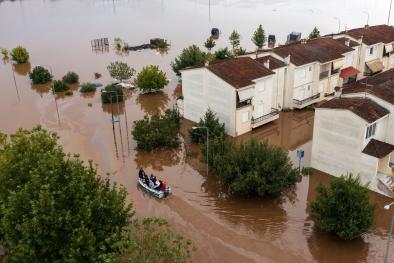Flash Droughts: A Review and Assessment of the Challenges Imposed by Rapid-Onset Droughts in the United States
Study key findings & significance
- The paper highlights recent research on the phenomenon of flash drought and reviews the literature to present the case for a preferred definition.
- Some researchers focus on duration, but Otkin is advocating for a different definition, one that incorporates the concept of a rapidly intensifying drought, focusing on rate of development as opposed to its duration.
Author quotes
“From my perspective, if you label a 5-day weather event, one of short duration, as flash drought, that is a synoptic weather feature, not a flash drought. Nor is it climate, because climate events such as drought occur over a longer period of time.”
Jason Otkin, lead author and drought researcher at the University of Wisconsin-Madison Cooperative Institute for Meteorological Satellite Studies (CIMSS)
Abstract
Given the increasing use of the term “flash drought” by the media and scientific community, it is prudent to develop a consistent definition that can be used to identify these events and to understand their salient characteristics. It is generally accepted that flash droughts occur more often during the summer owing to increased evaporative demand; however, two distinct approaches have been used to identify them. The first approach focuses on their rate of intensification, whereas the second approach implicitly focuses on their duration. These conflicting notions for what constitutes a flash drought (i.e., unusually fast intensification vs short duration) introduce ambiguity that affects our ability to detect their onset, monitor their development, and understand the mechanisms that control their evolution. Here, we propose that the definition for “flash drought” should explicitly focus on its rate of intensification rather than its duration, with droughts that develop much more rapidly than normal identified as flash droughts. There are two primary reasons for favoring the intensification approach over the duration approach. First, longevity and impact are fundamental characteristics of drought. Thus, short-term events lasting only a few days and having minimal impacts are inconsistent with the general understanding of drought and therefore should not be considered flash droughts. Second, by focusing on their rapid rate of intensification, the proposed “flash drought” definition highlights the unique challenges faced by vulnerable stakeholders who have less time to prepare for its adverse effects.
Related Content




